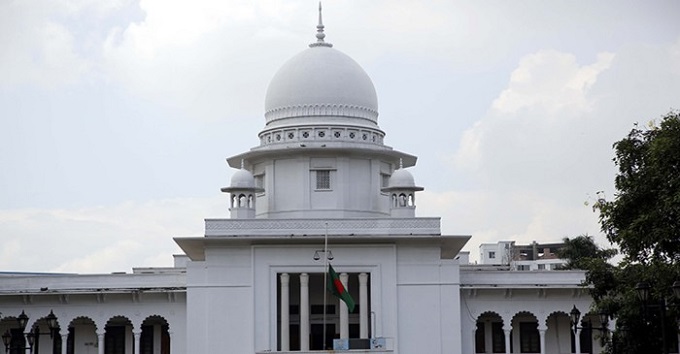Suez crisis triggered Israel’s first occupation of Gaza

- Update Time : Tuesday, November 2, 2021
- 226 Time View

Perched on his sofa in a windowless room, leaning forward on his cane, Bassam Barbakh said Israel’s first military incursion into Gaza 65 years ago was seared into his memory.
“I swore when I was a child that if I lived a thousand years I couldn’t forget what happened,” the squat 73-year-old told AFP at his home in Khan Yunis, southern Gaza.
Israel’s controversial history in the Palestinian enclave includes nearly four decades of occupation — from 1967 to disengagement in 2005 — and a blockade since 2007, the year Hamas Islamists seized the territory.
But the first time Israel took control of Gaza was on November 3, 1956 when Egypt’s military governor surrendered, marking the start of a four-month occupation during the Suez crisis.
That period has receded as a prominent phase in the Israeli-Palestinian conflict, displaced by the occupation that followed the 1967 Six Day War.
Israel has said the objectives of the 1956 Gaza invasion included ensuring free passage through the Straits of Tiran and “reducing fedayeen (guerrilla fighter) attacks” from the Strip.
According to Tel Aviv University historian Eyal Zisser, Israel had before the Gaza invasion determined that circumstances in the Strip risked “destabilising” Israel, following previous border unrest and the threat of Egyptian forces amassing in the enclave.
“From the Israeli point of view, this was an unacceptable situation,” Zisser said, adding the Suez crisis created an “opportunity” to act.
– ‘Conflict in the accounts’ –
On July 26, 1956, then Egyptian president Gamal Abdel Nasser nationalised the Suez Canal.
Fearing the waterway could be cut off, Britain, France and Israel colluded to attack Egypt, with Israel seizing control of Gaza and the Sinai Peninsula. It withdrew from those areas in March 1957 under US pressure.
A bustling market now surrounds Khan Yunis’s centuries-old Barquq Castle, and outside the walls, Barbakh gestured to areas where he said dozens of bodies were left by Israeli troops.
He showed AFP photos of two of his brothers who he said were slain during the “terrible and terrifying” unrest.
The United Nations agency for Palestinian refugees (UNRWA) noted in a December 1956 report that “a large number of civilians were killed” in Khan Yunis on November 3, but there was “conflict in the accounts given as to the causes of the casualties”.
Israel’s army recently told AFP that after the Gaza takeover, “about 4,000 Egyptian soldiers, and fedayeen and Palestinian combatants remained inside”, with many “dressed as civilians”.
Israeli operations to curb fedayeen attacks and confiscate weapons sparked clashes, the army said.
“This led to harm to civilians, as the IDF (army) could not differentiate between combatants and uninvolved civilians,” it said.
Barbakh claimed Israel had “punished” Khan Yunis because of the “ferocity of the resistance”.
UNRWA also reported that “a number of refugees were killed” by Israeli fire in Rafah, further south, on November 12.
Israel’s army described those killed as “48 rioters” who threatened troops, citing then prime minister David Ben-Gurion.
On Friday, Israeli President Isaac Herzog apologised for an incident that occurred on the first day of the Suez Campaign, October 29, 1956, when 49 Arabs were killed in Kafr Qasim, a village inside Israel.
“On the 65th anniversary of one of the saddest events in the history of our country … on behalf of myself and the State of Israel, I ask for forgiveness,” Herzog said.
Israel has said 231 soldiers died in the operation that captured the Sinai Peninsula, and the army said at least seven civilians were also killed in multiple attacks near the Gaza border in the first week of November 1956.
– West Bank parallels –
Lior Yavne, executive director of Israeli organisation Akevot which uses archives to promote human rights, said before being forced to withdraw, Ben-Gurion’s government intended for Gaza to become “an integral part of Israel”.
“Israel declared an area in the Gaza Strip a military zone for the purpose of building a settlement,” he said, drawing parallels with the later development of settlements in the occupied West Bank, now home to some 475,000 Jews.
Zisser said Ben-Gurion and other Israeli officials had made various comments about absorbing Gaza into Israel, but their intentions were not definitive and contingent on multiple factors, especially Washington’s actions.
“Clearly the position of some (in 1956) was ‘if the Americans let me, I will stay here (in Gaza),'” he said.
Yavne noted the era marked an early Israeli brush with international law on occupation.
Shabtai Rosenne, the foreign ministry’s then-legal adviser, intervened after reading a draft proclamation he determined could have amounted to the illegal annexation of Gaza.
Rosenne noted that under domestic legislation, the defence minister “had the authority to proclaim (Gaza) as subject to Israeli law.”
But, he warned, other countries might conclude Israel’s annexation of Gaza “contravenes” international law.
The defence ministry backtracked, yet Israel would go on to unilaterally annex east Jerusalem and the Golan Heights after the 1967 war, moves largely rejected by the international community.

























